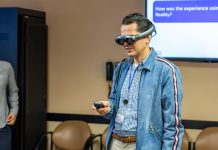
As employers compete for qualified talent, learning professionals know they play a growing role in building an attractive, competitive employer brand. The best employer brands appeal to the changing expectations of the workforce, but they also support strategic business requirements like talent agility. A strong learning culture feeds both goals through learning and development.
As learning professionals embrace their growing responsibility, many admit that traditional learning models are broken. According to a recent Deloitte survey, 86 percent of HR leaders believe they must reinvent their organization’s ability to learn. Why? 87 percent of executives admit their learning culture does not support effective new skills development fast enough. The problem is two-fold.
Traditional Learning Models are Broken
The first part of the problem lies with traditional ‘learning cultures’ themselves. Traditional cultures don’t appeal to rising employee expectations, especially those of Gen Z, nor do they offer the speed required to build evolving skill-sets for critical roles.
The second part of the problem lies with urgency. Learning leaders know they have a small runway to make big improvements. The World Economic Forum puts this into perspective, estimating that nearly 54 percent of all employees worldwide will require significant reskilling and upskilling by 2022.
The Future of Learning: Nano-learning
To that end, bold learning professionals are breaking away from traditions and embracing new models that improve the experience for learners. This approach also accommodates the speed and scale required for the business through nano-learning. Nano-learning is the future of learning for a variety of reasons:
The first reason is relevance. Regardless of content, the message is irrelevant when the delivery is a turn-off. As the next generation floods the workforce, it’s time to embrace their content consumption preferences. Think Snapchat, Twitter, and text.
The second reason is efficiency. Traditional e-learning, methodologies such as video modules, require incredible human, time, and financial resources to build, consume and maintain.
The third reason is engagement. Traditional learning methodologies are not easy to consume. As engagement drops, learning stops, and learning professionals are robbed of the valuable insights and feedback they need to improve.
While traditional, long-form learning will always have a place in highly specialized roles, there is a growing need to support learning in fast-paced, competitive roles and industries like pharma, e-commerce, manufacturing, and construction. In addition, there is widespread opportunity speed learning around onboarding, culture, compliance, and more.
Nano-learning fills those needs. It delivers condensed information on a single subject in an engaging format. It provides a few seconds, sound bites, or sentences of valuable and relevant content via platforms like Tik Tok, Twitter, or text messages. To date, the most popular form of nano-learning is text-based and offers distinct advantages over traditional el-earning learning methods. Below we unpack four of the most important benefits:
Nano-learning supports lightning-fast learning.
Nano-learning speeds reskilling and upskilling because learning happens within the regular flow of work through bite-sized, highly relevant learning opportunities consumed during everyday meetings and tasks. For example, mission-critical training, such as customer response during a crisis.
Nano-learning is inclusive learning.
As remote business models increase and geographic barriers fall away, learning professionals must remember that access supports an inclusive culture when it comes to e-learning. According to Pew, Over 33 million employees in the US are unable to learn due to internet and accessibility limitations. Nano-learning removes that barrier immediately.
Nano-learning has higher adoption rates.
Consumer and employee expectations are one and the same. 90 percent of learning professionals say that learner engagement is the most important feature in a learning platform so it would make sense to take UX clues from their marketing peers. Just as texts have a 98 percent open rate, compared to just 20 percent for e-mail. Nano-learning has a 94 percent adoption rate, vs just 21 percent for e-mail based courses and just five percent for video learning. According to Go1’s State of Learning Report, the majority of employees prefer learning interactions that are just two to five minutes in length.
Nano-learning is more efficient.
Traditional learning models can require years to build and cost thousands to design, roll out, and maintain courses. Nano-learning reduces the drain on human, financial, and time resources. Text-based courses can be spun up in minutes and cost a fraction of the traditional learning budget.
In 2021, learning professionals will seek ways to build a more attractive learning culture, while doing more with less. (For more information on how learning and development has changed, check out the learning and development lessons of 2020.) Nano-learning offers the unique opportunity to move faster and build more engaging and effective learning experiences that bring learning back up to the speed of changing business needs and increasing employee expectations.




